Prairie Parasitism, post and images by Christopher Jason
Christopher Jason is a technician currently working for the Conservation lab in Washington State University, Vancouver. Passionate about insects (especially butterflies and moths) and wildlife photography.
Prairie Parasitism
Prairies are beautiful places with abundant flowers and insects. Most are familiar with insects being pollinators and pests. But insects can also be parasitic. For the past year, I’ve been fortunate enough to work on Johnson Prairie on Joint Base Lewis-McChord land with the Conservation lab in Washington State University. While my work focuses on butterflies, I had the chance to encounter other insects that have very interesting ecology.
One of my favorite groups of bees are the nomad bees (Nomada spp.), also commonly known as cuckoo bees. Nomad bees are kleptoparasitic on mining bees (Andrena spp.), in that they lay their eggs in nest cells of other bee species. When the eggs hatch, the larvae then kill the mining bee eggs in the nest and consume their stored pollen and nectar. Nomad bees also exhibit a unique way of sleeping. They hang on to a substrate only with their mouthpart.
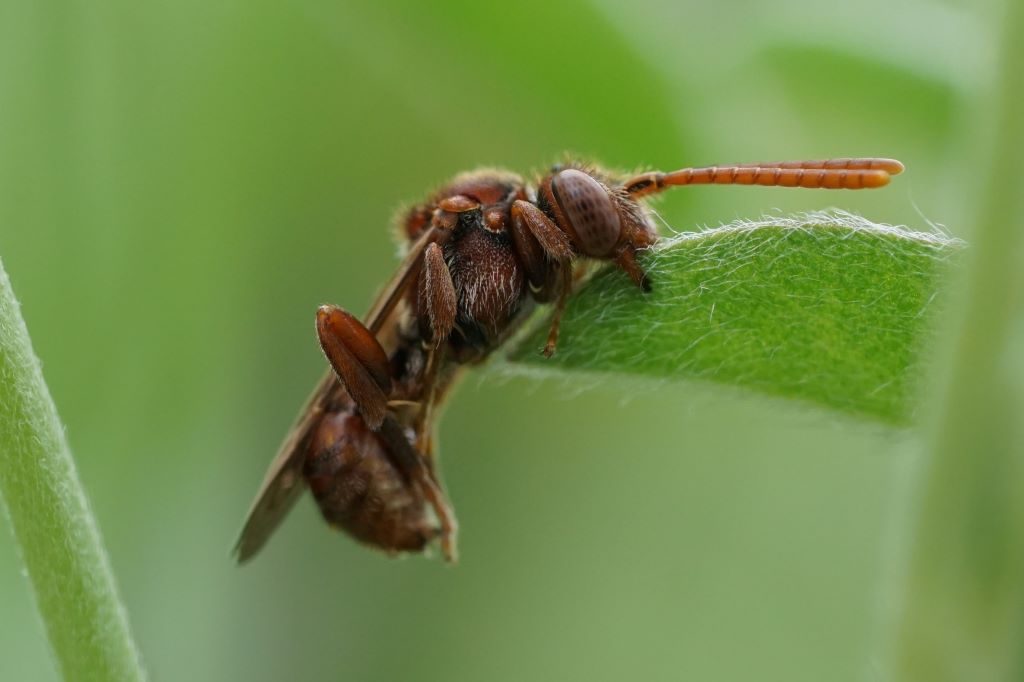
Nomad Bee Sleeping, photo by Christopher Jason
The mining bee is also a host for another insect, the blister beetle (Meloidae). These beetles’ first instar larvae are called triungulin, they are mobile and can be found on flowers and on adult bees such as mining bees and striped sweat bees (Agapostemon spp.). These triungulin attach to adult bees to then be carried to the bee’s nest. Many triungulin in the Pacific Northwest remain undescribed and are understudied.
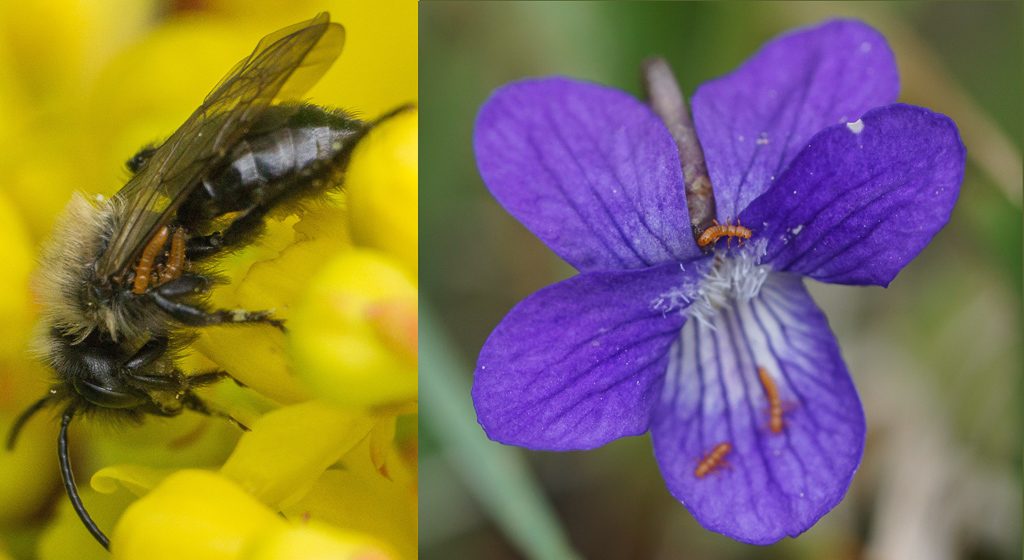
Mining bee and hookedspur violet with triungulin. Photos by Christopher Jason
Blood bees are high contrast and therefore easily noticeable with their black body and orange-red abdomen. The female blood bees will search for nests of sweat bees (Lasioglossum and Agapostemon) and mining bees. She then replaces the eggs in the nest with hers. Afterwards, she exits the nest and covers it as it was found. The larvae then hatch and feed within their nests.
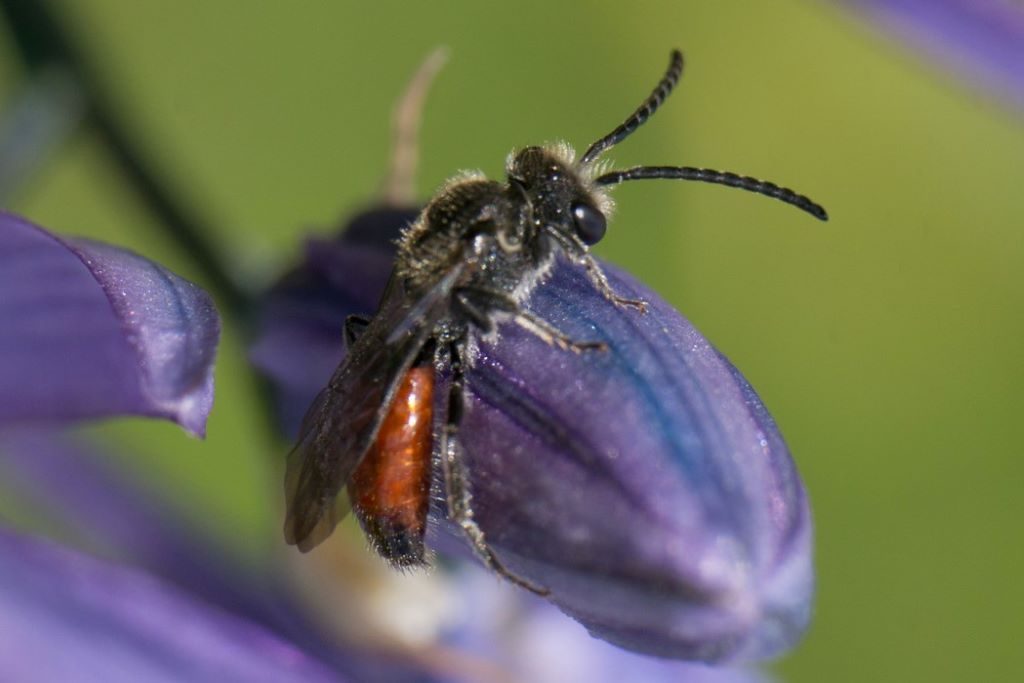
Blood Bee on Camas, Photo by Christopher Jason
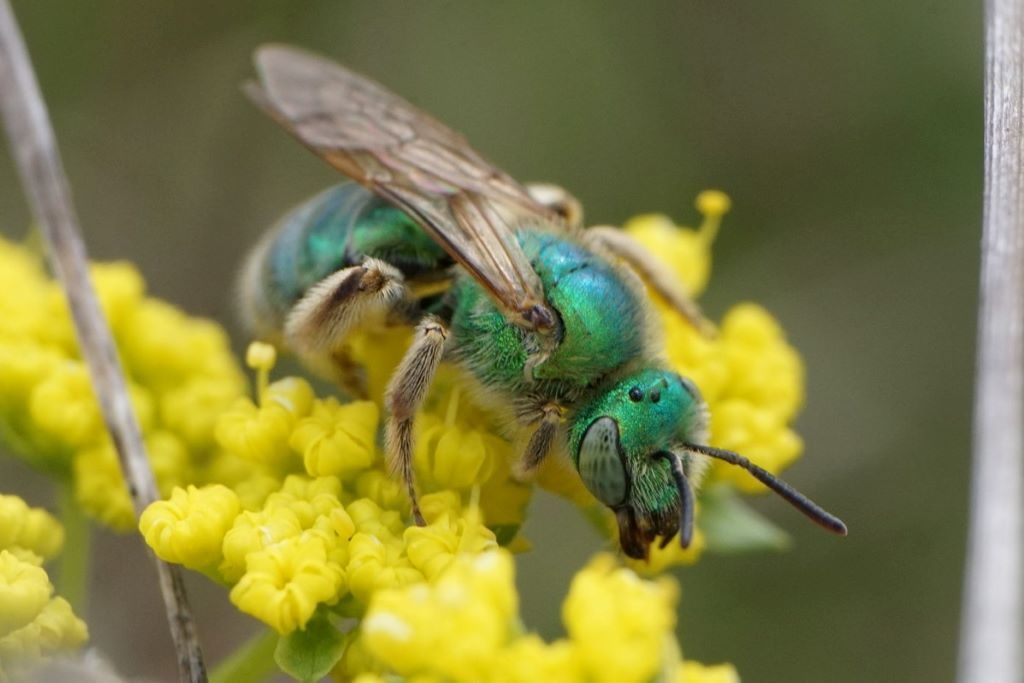
Striped Sweat Bee on biscuitroot, photo by Christopher Jason.
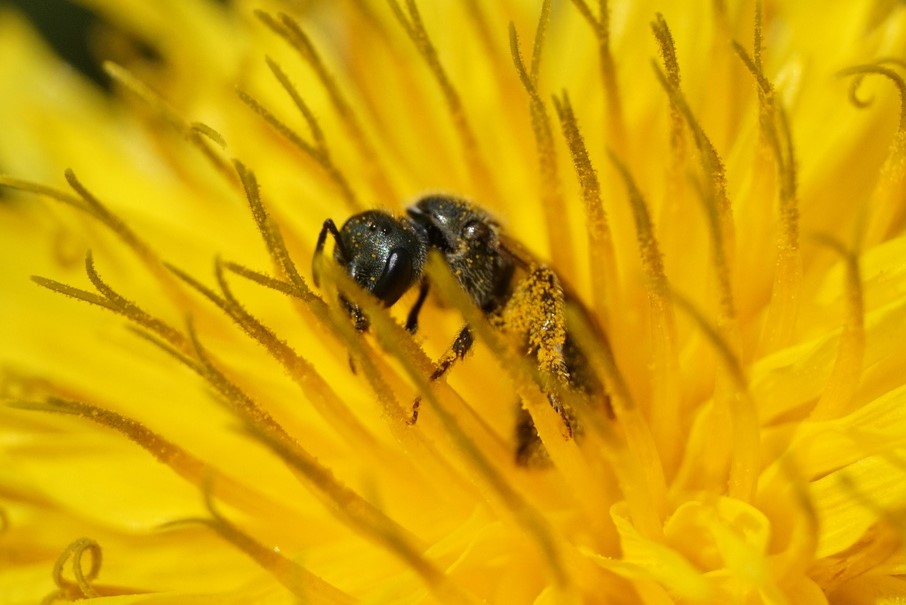
Sweat Bee on false dandelion, Photo by Christopher Jason
This past spring, as I was looking for silvery blue butterflies, I came across a vibrant maroon colored wasp with what looked like a long tail. I took some pictures of it and learned that the ‘tail’ was actually a very long ovipositor – an organ to lay eggs – a trait that is shared with many wasps in the family Ichneumonidae. Ichneumon wasps are parasitoids, using their long ovipositors to lay eggs in or on various insects and spiders. The larvae will then feed inside or on the host’s body and eventually kill it. Despite Ichneumonidae being one of the largest families in the animal kingdom, wasps belonging in this family are relatively understudied and have a reputation of being one of the most challenging insect families to identify down to species level.
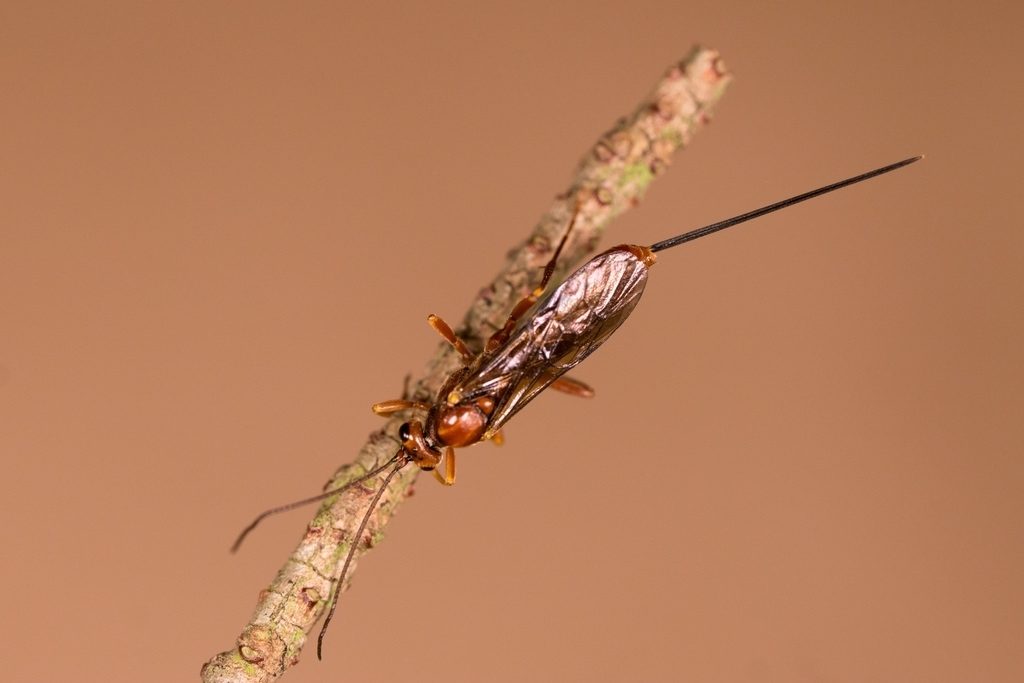
Ichneumon wasp with long ovipositor. Photo by Christopher Jason

